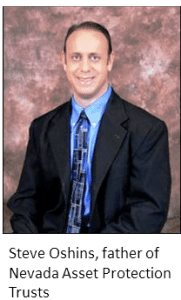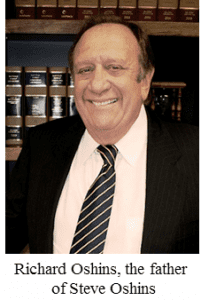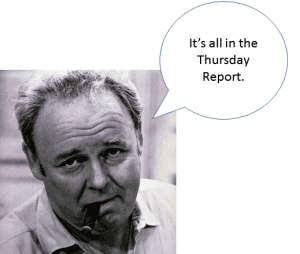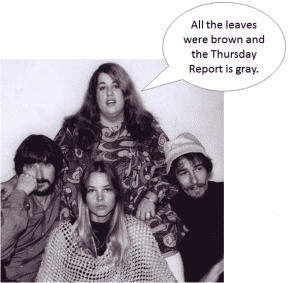The Thursday Report 6.22.17 – Med Mar, Nevada Trust Case, Supremes Cause Pain & Suffering
Re: Med Mar, Nevada Trust Case, Supremes Cause Pain & Suffering
Alter Ego and Transfirst v. Magliarditi by Seaver Brown
Florida Supremes Inflict Pain & Suffering on Doctors-McCall vs. United States by Adriana Choi
All About The New Medical Marijuana Legislation (part 1 of 2) by Alan Gassman and Seaver Brown
AXA’s Life with Insight Podcast Interview with Randy Zipse & Barry Flagg
6 Tips to Scale Your Service Business by David Finkel
Richard Connolly’s World –Many Estate-Tax Payers Just Got a Reprieve from the IRS
Humor! (Or Lack Thereof!)
We welcome contributions for future Thursday Report topics. If you are interested in making a contribution as a guest writer, please email Alan at agassman@gassmanpa.com
This report and other Thursday Reports can be found on our website at www.gassmanlaw.com

Quote of the Week
Bud Anderson: “How many were in your class, Dad?”
Jim Anderson: “Oh, 2-300 I guess.”
Bud Anderson: “How many are still alive?”
-Bud and Jim Anderson of “Father Knows Best”
This week’s Thursday Report is dedicated to dads everywhere, and what better look at fatherhood than the classic radio and television show, “Father Knows Best.”
Father Knows Best, was a show that looked into American Family life with mom, dad and their growing children in small city USA. From 1954 – 1963 audiences enjoyed 206 episodes. The show that went into reruns has never left the air waves.
The timeless story plots are fun, entertaining and timeless.
Most episodes were expertly directed by Peter Tewksbury and with each week the Anderson Family invites you into their middle class home and you watch how the family deals with real life topics.
Family values and how the simplest of story themes visited have not changed much in the nearly six decades from the 1st episode.
For a great episode of the show, check out the link below:
https://www.youtube.com/watch?v=fiBkRoZMI0U&list=PLeagipoZmyfnX72vC5n7LyhNyIhfioIl5&index=3


Alter Ego and Transfirst v. Magliarditi
by Seaver Brown

Executive Summary of Transfirst Group, Inc. v. Magliarditi, 2017 WL 2294288 (D. Nev., May 25, 2017).
A husband and wife duo acted in cohort for years to defraud their creditors and avoid paying a large judgment obtained against them. In doing so, the husband enlisted the help of several legal entities that he claimed he had no part in directing, yet according to his wife, retained complete control over their operations. The creditors accused the husband for operating these entities as alter egos of himself to try and pierce the corporate veil to recoup some of the judgment owed. The creditors further claimed that the husband fraudulently transferred assets between the entities in a manner that was intended to defray their abilities of collecting on the judgment. Ultimately, the federal court judge took a gamble and ruled in favor of the creditors by granting their motion for preliminary injunction, but not before placing some bold bets on how the Nevada Supreme Court would rule on some key issues.
Facts
The creditors, a group of plaintiffs known as Transfirst, sought a preliminary injunction against the defendants, Dominic Magliarditi, his wife Francine and several entities associated with the Magliarditi family. This suit for a preliminary injunction was the result of the Magliarditis failure to pay a remaining $4 million judgment balance awarded to Transfirst. Transfirst filed a second amended complaint that asserted claims against the Magliarditis alleging that the entities were Dominic’s alter egos, and that transfers between the entities and Francine were fraudulent.
In the original suit against Transfirst and the Magliarditis, Dominic and other associated entities were found liable for mail and wire fraud that violated the Racketeer Influenced and Corrupt Organizations Act (“RICO”).
Transfirst alleged that prior to the preliminary injunction suit, the Magliarditis had paid only $62 towards the $4,486,725 judgment. Further, according to Transfirst’s First Amended Complaint, the Magliarditis “[were] working together to defraud [Transfirst] and prevent them from collecting on the judgment by hiding and transferring assets through the use of a labyrinth of layered shell companies and trusts which are shams, existing for no reason other than to hide assets, defraud Transfirst, and otherwise act as the alter ego of Dominic.”
Due to the Magliarditi’s failure to pay any portion of the judgment balance and apparent refusal to alter their lifestyle, Transfirst thought it was necessary to file a preliminary injunction. What follows is a discussion of the legal standards for a preliminary injunction and why Nevada entities should be fearful of claims for alter ego.
Comment
To succeed on a motion for preliminary injunction a plaintiff must demonstrate: (1) a likelihood of success on the merits; (2) a likelihood of irreparable harm; (3) the balance of hardships favors the plaintiff; and (4) an injunction is in the public interest.
Much of the court’s focus was on whether the plaintiff was able to show there would be a likelihood of success on the merits. In doing so, the court had to begin by looking at Transfirst’s claim that the entities operated by the Magliarditis were simply alter egos of Dominic, and he did not exhibit enough separation between the two. Quoting LFC Marketing Group v. Loomis, 8 P.3d 841, 845 (Nev. 2000), the court noted that “the equitable remedy of piercing the corporate veil . . . in circumstances where it appears that the corporation is acting as the alter ego of a controlling individual. Nevada also recognizes reverse piercing where a creditor may reach a corporation’s assets to satisfy the debt of a corporate insider based on a showing that the corporate entity is really the alter ego of the individual.”
In reading the case at issue, it was interesting to see the court discuss Nevada’s lack of relevant decisions pertaining to the subject matter and that the federal judge would have to “predict” what the Nevada Supreme Court might decide in this situation. Apparently, in post-judgment enforcement proceedings it is not all that uncommon for a federal court judge to make non-binding, albeit highly persuasive, decisions that apply local state law.
Due to the lack of Nevada law on the issue, the federal judge had to determine the likelihood that Transfirst would succeed in making alter ego claims against the Magliarditis, and the various entities they were associated with. Up first were limited liability companies.
The Magliarditis argued that a claim for alter ego could not apply to LLCs because in Nevada charging orders are the exclusive remedy for judgment creditors to attach to an LLC member’s interest. The court predicted that the Supreme Court of Nevada would hold that LLCs are subject to alter ego under the appropriate circumstances. This held true despite the court questioning whether the charging order statute even applied to the Magliarditis because Dominic was not actually a member of any LLC.
Next up were the partnership entities. Again, the Magliarditis argued that alter ego does not apply to partnerships because the general partner is always liable for partnership debts. Similar to the LLC structure, Dominic was neither a limited partner nor a general partner of the partnerships. The court again predicted that the Supreme Court of Nevada would apply alter ego to partnerships, but emphasized that it may be inequitable to do so at certain times such as when it would “force a third party to be partners with someone with whom it did not choose to associate itself.”
Finally, the court addressed alter ego and trusts, which the Magliarditis argued could not apply because a trust is not an entity. The court also predicted that the Supreme Court of Nevada would apply alter ego to trusts. This time, however, the court looked to California law for guidance, which it said Nevada often does when it lacks the body of law necessary to make an informed decision. The court sided with California and held, “it is well-settled that a trust created for the purpose of defrauding creditors or other persons is illegal and may be disregarded.”
Moving forward in it’s analysis, the court began its discussion of whether Transfirst had shown a likelihood of success on alter ego. Again, quoting LFC Marketing Group v. Loomis, 8 P.3d 841, 846-47 (Nev. 2000), the court noted that “to show alter ego, the plaintiff must establish by a preponderance of the evidence that (1) the corporation is influenced and governed by the person asserted to be the alter ego; (2) there is such unity of interest and ownership that one is inseparable from the other; and (3) adherence to the corporate fiction of a separate entity would, under the circumstances, sanction a fraud or promote injustice.” Factors that are helpful in determining whether an alter ego relationship exists include: (1) commingling of funds; (2) undercapitalization; (3) unauthorized diversion of funds; (4) treatment of corporate assets as the individual’s own; and (5) failure to observe corporate formalities.
Ultimately, the court believed that Transfirst had shown a likelihood of success regarding their alter ego claim against the Magliarditis. In light of the facts, the court believed that despite Dominic stepping down as president and Francine assuming the role, he still remained in control of the entities’ assets and continued to govern and influence their decisions. Also working against Dominic was evidence that over the years he used funds from the entities to pay his own personal expenses, that he deposited funds into and transferred funds between each entity, and that he took several undocumented loans from each entity.
The other elements needed to support the preliminary injunction were dispelled with by the court fairly quickly and they ultimately granted the injunction.
In dealing with the fraudulent transfer claim against the Magliarditis the court asked whether Transfirst would be likely to succeed on the merits of its claims that the Magliarditis acted with the intent to hinder, delay or defraud. The court ultimately held that the Magliarditis did fraudulently transfer and conceal assets “through unexplained deposits and transfers and other undocumented loans. Further, before the fraudulent transfers at issue, Dominic had been sued by Transfirst and many transfer we made after judgment was entered.” Perhaps most egregious, however, was that Dominic withdrew large sums of money from an entity’s bank account just days before his wife Francine would be deposed.
Conclusion
With all the above laid out before the court it was easy for the judge to determine that an allowing the Magliarditis to continue operating under the guise of a entirely separate corporate entity would allow them to continue defrauding Transfirst. Dominic has been using these entities for years to shield his assets from Transfirst and effectively throw them off his trail with several undocumented loans and other transactions so as to avoid paying the $4 million judgment.



Steve Oshins had this to say about the Nevada ruling:
“This case apparently had extreme facts and the court’s conclusion on alter ego law allowing the creditor to reach into an LLC and a Trust would not apply to normal creditor protection planning. The court ruled that the defendant wasn’t a member of the LLC and therefore it wasn’t about the traditional equitable remedies that Nevada’s business entities disallow by statute. But still, as wrong and unfair as it would be, I think the Supreme Court of Nevada would rule that the LLC/LP statute doesn’t allow this. It would be a great test of just how far the Supreme Court would be willing to go. Nevada and a handful of other jurisdictions have special statutes that go beyond those of the other states, but you never know where the Supreme Court Justices may feel that the line has been crossed.”

Florida Supremes Inflict Pain & Suffering on Doctors-McCall vs. United States
by Adriana Choi

In 2003, the Florida Legislature and Governor Jeb Bush approved Florida Statute 766.118(2) and (3) to limit the noneconomic pain and suffering damage awards for personal injury arising from medical malpractice to $500,000 per plaintiff, or up to $1,000,000 if the negligence resulted in a permanent vegetative state or death. The purpose of the statute was to prevent what appeared to be the beginning of a 3rd Malpractice liability insurance crisis.
The statute in question includes the following language:
(2) LIMITATION ON NONECONOMIC DAMAGES FOR NEGLIGENCE OF PRACTITIONERS.
(a) With respect to a cause of action for personal injury or wrongful death arising from medical negligence of practitioners, regardless of the number of such practitioner defendants, noneconomic damages shall not exceed $500,000 per claimant. No practitioner shall be liable for more than $500,000 in noneconomic damages, regardless of the number of claimants.
(b) Notwithstanding paragraph (a), if the negligence resulted in a permanent vegetative state or death, the total economic damages recoverable from all practitioners, regardless of the number of claimants, under this paragraph shall not exceed $ 1 million. In cases that do not involve death or permanent vegetative state, the patient injured by medical negligence may recover noneconomic damages not to exceed $1 million if: . . . (certain statutory language is met. See Florida Statute Section 766.118 (2) and (3) for further detail)
As discussed below, last week the Florida Supreme Court ruled that the caps are unconstitutional. The earlier McCall case discussed below held that the $ 1,00,000 cap on wrongful death damages was also unconstitutional.
More detail:
According to the Congressional Budget Office, between 2000 and 2002 insurance premiums
for medical malpractice liability insurance increased nationwide by 15%. 1 While premiums increased generally, obstetricians/gynecologists and internists and general surgeons experienced alarming increases at about 22% and 33%. 2 The rapid increase in premiums were the result of “increased costs to pay claims (from growth in malpractice awards), and because of the reduced income from their (insurance companies) investments, and short-term factors in the insurance market.”3 Members of Congress were worried doctors would begin to practice defensive medicine4, restrict their practices or retire. 5
A study completed in 1992 by the Office of Technology Assessment demonstrated that states who implemented a cap on noneconmic damage awards, also reduced the number of claims filed and premium rates. Accordingly, a study completed in 2002 concluded that a cap on noneconomic damages would reduce premiums by 1/3.
Until 2014, when McCall was decided (11 years after the enactment of the statute), Florida Courts remained silent on the constitutionality of the damage award cap. However, in McCall,6 the Florida Supreme Court held that the cap on wrongful death damages in Fla. Stat. § 766.118 violated the Equal Protection Clause of The Florida Constitution.7
Following McCall, on June 8, 2017, the Florida Supreme Court ruled that the cap provided in Fla. Stat. § 766.118 (2) and (3) were unconstitutional because they violated the Equal Protection Clause of the Florida Constitution. The reasoning behind their conclusion was that the cap on noneconomic damages primarily discriminated against those who suffer the worst injuries, as opposed to those who the statute intended to protect. The Court also stated that evidence of an insurance crisis was nonexistent and therefore the caps were not serving the Legislature’s purpose.
Some have speculated that the Court’s decision to strike down the cap will result in an increase of premiums between 9-14%. It looks like it is time to go back to the drawing board on how to properly protect physicians from runaway jury verdicts, while helping to assure that those with legitimate injuries have continued access to a court system.
Time will tell whether medical practice-based agreements signed by patients can limit damages and require arbitrators who are medical doctors to resolve disputes. More and more medical practices should consider patient arbitration agreements, if the applicable medical malpractice carrier supports this, given these significant changes to the playing field.

All About The New Medical Marijuana Legislation
by Alan Gassman & Seaver Brown


Introduction
On June 9, after months of hashing out the final details, the Florida Legislature rolled out its guidelines for Florida’s budding medical marijuana industry. This new Act known as the Medical Use of Marijuana Act (“MUMA”), is the long-awaited outcome of last year’s Medical Marijuana Legalization Initiative, also known as Amendment 2, which passed in November with nearly 71 percent of voters in favor of allowing certain individuals to have access to medical marijuana treatment. These guidelines allow for the use and availability of medical marijuana for those suffering from statutorily enumerated debilitating diseases or qualifying medical conditions as determined by a licensed state physician.[1]
The Medical Use of Marijuana Act regulates how patients become eligible to use medical marijuana, and what physicians and medical directors must do before prescribing marijuana to qualified patients. Additional highlights include: (1) a medical exemption from state sales tax of marijuana and marijuana delivery devices; (2) a cap on the number of retail dispensaries and treatment centers until April 2020; (3) required background checks of those individuals in ownership, management, or other high ranking positions in a marijuana treatment center; (4) periodic inspections of treatment centers; and (5) a ban on smoking medical marijuana that limits use to only the edible form and vaporizing.
Important Definitions
- Marijuana means all parts of the plant: seeds, extracted resins, and any other type of preparation of the plant, including low-THC cannabis. THC is the psychoactive compound known as tetrahydrocannabinol which causes the euphoric feeling and altered state of consciousness that users report experiencing when ingesting normal marijuana plant flowers. This allows many patients to escape the conscious feeling of pain and enhances the living experience in many ways for those who have used and encouraged it.[2]
- Low-THC Cannabis is marijuana (as defined above) that contains 0.8 percent or less of THC and is required to be used for pregnant patients, and is the only form of medical marijuana allowed on public transportation, in a public place, in a school bus, vehicle, aircraft, or motorboat.
- Marijuana Delivery Device is an object from a medical marijuana treatment center that is used to prepare, store, ingest, inhale, or otherwise introduce marijuana into the body.
- Edibles are commercially produced food items made with marijuana oil. No other form of marijuana may be used in producing an edible.
- Smoking is the actual burning of marijuana and inhaling the smoke, which is not permitted. However, vaporizing, which uses a device to heat the active ingredients of plant material to the temperature at which the active compounds in marijuana become vaporized and available for inhalation, is permitted, and is said to provide optimum use of all parts of the plant, whereby smoking creates secondary smoke and higher temperatures which may cause loss of access to parts of the plant that would simply be burned out of existence at the higher temperature. Elderly patients who know how to smoke a cigarette may not be able to use a vaporizer without assistance.
- Qualifying Medical Conditions include: cancer, epilepsy, glaucoma, HIV, AIDS, post-traumatic stress disorder, amyotrophic lateral sclerosis, Crohn’s disease, Parkinson’s disease, multiple sclerosis, chronic non-malignant pain, a terminal condition, or other debilitating medical conditions of the same kind or class as, or comparable to, those enumerated and for which a physician believes that the medical use of marijuana would likely outweigh the potential health risks for a patient.
- Terminal Condition is defined as: (1) a progressive disease or a medical or surgical condition that causes significant functional impairment; (2) that is not considered by a treating physician to be reversible without the administration of life-sustaining procedures; and (3) will result in death within one year after diagnosis if the condition runs its normal course.
- Chronic Non-Malignant Pain is pain caused by a qualifying medical condition or originates from such condition and persists beyond the usual course of that condition.
Patient Requirements
While not precisely a requirement that is either easily satisfied or preferred, an individual must be suffering from one of the qualifying medical conditions in order to receive medical marijuana.[3]
Physician Requirements
The requirements for physicians to become qualified to order medical marijuana are more burdensome. To begin prescribing after the new rules take effect, which will be by October 2017, physicians must complete a two-hour course and examination offered by the Florida Medical Association or Osteopathic Medical Association, which will not cost more than $500. Those who wish to be employed as a Medical Director of a marijuana treatment facility must also complete the two-hour course and examination.
Physicians that recommend medical marijuana to patients may not be employed by, or have any direct or indirect economic interest in a medical marijuana treatment center or marijuana testing laboratory.
Upon first meeting with a patient who will receive a prescription for medical marijuana, the physician must perform a physical examination while present in the room with the patient, in addition to a full assessment of the patient’s medical history. Following the physical examination and review of medical history, the physician must have or be able to diagnose the patient with at least one qualifying medical condition.
With the above information in mind, the physician must then independently determine that the medical use of marijuana would likely outweigh the potential health risks for the patient, which must be documented on the patient’s medical record. Patients under the age of 18 must have a second physician concur with the above determination.
If the patient is female, the physician must ensure she is not pregnant, and if so, may only issue a certification for low-THC cannabis.
The physician must also review the patient’s controlled drug prescription history, and perform a search of the Medical Marijuana Use Registry to confirm that the patient does not already have an active physician certification for the medical use of marijuana.
Once a certification for the medical use of marijuana is issued, the physician must register the patient on the Medical Marijuana Use Registry. In doing so, they enter the patient’s qualifying medical condition, the dosage recommended to the patient, the amount and forms of marijuana authorized, and the types of marijuana delivery devices needed by the patient. Any changes to the above must be documented and updated by the physician in the registry.
Finally, a patient must sign a written informed consent on the adverse side effects of marijuana and other treatment options that are available for the medical condition. This informed consent must be maintained in the patient’s medical record and be given each time a physician issues a certification for the patient. Physicians must use a standardized informed consent form that is adopted by the Board of Medicine and the Board of Osteopathic Medicine. The requirements of what must be contained in this informed consent include the following:
- Mention that the Federal Government continues to classify marijuana as a Schedule I controlled substance, which indicates that it has a high potential for abuse and no currently accepted medical use in treatment in the United States.[4]
- A statement concerning the current approval and oversight status of marijuana by the Food and Drug Administration.
- The current state of research on marijuana’s ability to treat the patient’s qualifying medical conditions. This likely acts as a notice to the patient that there is a possibility of new, unanticipated, different, or worse symptoms that might result from the use of marijuana.
- A statement that mentions there is a potential for addiction.
- A notice to the patient that marijuana has the potential to affect his or her coordination, motor skills, and cognition, including a warning against operating heavy machinery, operating a motor vehicle, or engaging in activities that require a person to be alert or respond quickly.
- A statement of the potential side effects of using marijuana.
- A list of the risks, benefits, and drug interactions of marijuana.
- An agreement that the patient’s de-identified health information contained in the physician certification and medical marijuana use registry may be used for research purposes.
Medical Use of Marijuana Discussion
Assuming the above requirements have all been met and the physician believes that marijuana is suitable for the patient, what then does it mean for a patient to “medically use” marijuana?
- Subsection (j) of the Definitions in MUMA defines medical use as the “acquisition, possession, use, delivery, transfer, or administration of marijuana authorized by a physician certification.” The term, however, does not include the following:Possession or use of marijuana that was not purchased or acquired from a medical marijuana treatment center. Essentially, you cannot purchase from an unauthorized dealer or grow your own marijuana for consumption.
- Possession or use of marijuana in a form for smoking (as defined above), or prepared food items other than edibles made from only marijuana oil and non-marijuana materials. Vaporizing marijuana extracts and flowers may only be done from sealed, tamper-proof receptacles.
- Using marijuana in any form or amount that is inconsistent with the directions given by the qualified physician.
- Any transfer of marijuana to a person other than the patient, or his or her caregiver on behalf of the patient.
There are also restrictions on the locations in which a patient may use medical marijuana, including:
- On any form of public transportation, except when using low-THC cannabis.
- In any public place, except for low-THC cannabis.
- In the patient’s place of employment, except when permitted by his or her employer. There will doubtlessly be Americans with Disabilities Act analysis and possible litigation where employers will not grant consent for employees who would benefit from the use of medical marijuana.
- On the grounds of a preschool, primary school, or secondary school except as provided in Florida Statute § 1006.062, which allows each district school board to adopt policies and procedures for administering medications and other medical services to students.
- In a school bus, vehicle, aircraft, or motorboat, except for low-THC cannabis.
- In a state correctional institution in which prisoners are housed, worked, or maintained. This include those facilities that are under the authority of the Department of Corrections, Department of Juvenile Justice, a county or municipal detention facility, or a detention facility operated by a private entity.
Sales Tax Exemption
Florida Statute § 212.08 will be amended to read, “The sale at retail, the rental, the use, the consumption, the distribution, and the storage to be used or consumed in this state” of marijuana and marijuana delivery devices are exempt from any sales, rental, use, consumption, distribution, or storage tax.

AXA’s Life with insight Podcast Interview
with Randy Zipse with Barry Flagg

Life insurance expert and founder of Veralytic had an excellent recorded interview with Randy Zipse concerning the present situation with AXA life insurance.
A couple of the things that Barry said during this interview were as follows:
“With the de-regulation of the life insurance industry in the 70s and 80s, the insurers were granted more leeway in pricing products, and the difference between good pricing and bad pricing became much greater.”
“Given the changes, the fiduciaries now have an asset that requires ongoing monitoring. Not just because the asset, itself, requires ongoing monitoring, but the operating system requires ongoing monitoring as well.”
You can watch/listen to the Flagg/Zipse interview by going to YouTube and clicking here:
https://www.youtube.com/watch?v=-lV5wc1kzMI


6 Tips to Scale Your Service Business
By David Finkel

Owning a service business can be tough, and running a service business day-in and day-out can be even tougher.
For many service business owners, building a service business stopped being fun a long time ago and somehow it mutated into a “job”.
Having coached so many service business owners ourselves, not to mention owning multiple services businesses, I understand.
Here are 5 tips to help you scale your service business and get your life back.
- Recognize you’re in for a fight, and that it’s normal and expected.
Over the years my company, Maui Mastermind, has coached thousands of service businesses, helping them to overcome the typical obstacles that keep so many of these labor intensive companies small.
This is such a common challenge that we even have a name for it. We call it the “Self-Employment Trap”. This is where you are so consumed by your daily role running the company that you don’t have the time or energy to focus on building a service business as a business. In essence you’ve built a self-employed job for yourself, not a business.
Whether you’re working business-to-business or business-to-consumer, service businesses just may have the highest rate of “owner reliant” companies of any type of business (I wish the Small Business Administration would keep this statistic.)
Statistics the Census Bureau does track shows that 88.6 percent of businesses require the owner to be there as the primary person responsible for core functions like producing their product or service, managing the day to day business, and managing the financial aspects of the business. In other words – they are owner dependent.
So relax if right now your company needs you there every day. You’re not alone. And you can solve this challenge and over the next 2-5 years, work yourself out of the job of running the business.
- Don’t let your “expectations” and “perfectionism” trick you into thinking that only you can meet your own standards.
Why? Because of the high expectations of your clients combined with the difficulties in finding and managing your workforce to deliver up to your high standards tricks many service business owners into thinking that only they can do things right in the business. Hence they better make sure that they check everything.
This is a recipe for you the business owner forced into a role of catching many last minute mistakes or “fires” that you have to rush in and fix—often at a high price to your family and personal life.
But here’s the things, while it may be hard to find any one employee who can do things as well as you can, the solution isn’t for you to stay in the mix. The long term solution is for you to refine your systems so that when you take a talented team member, and integrate them in a stable structure (read systems) for producing your service offering, and give them simple controls that let them effectively self-manage, then not only can you improve on your quality, but you finally have a scalable business too.
Take the example of Klayton Tapley, owner of The Fireplace Place. When we first started coaching Klayton his business was stuck at $750,000 a year in sales, with Klayton playing the key role managing operations, leading sales, and doing the financial pillar of the business at night and on weekends.
Today Tapley’s team produces over $2 million in revenues with key staff who in combination with their internal systems and controls keep quality and consistency of work product better than ever.
So don’t let your own distorted beliefs about how you’re essential for doing all the key functions in the business stop you from working your way out of the “job” of your business.
- 100 percent of a great team member is better than 20 percent of you.
In Tapley’s case he is a great sales person, but because of the other demands of the business, he was spending less than 20 percent of his time focused on sales. When he made a few key hires in sales, and integrated them into his budding system, he got all of a several solid team members. This has lead his company to grow at 50 percent per year for the past several years.
So if you struggle with the belief that you could ever find someone as talented as you, remember, that all of a solid person is better than a mere distracted fraction of you for that specific area of the business.
- Intelligently hand things off in a progressive way, but not to an individual, but to an individual empowered by a system with simple controls in place.
Time to get concrete. If you want to scale your business and get your life back, it’s critical that you don’t just hand off to a person, but that you make sure your business gives that person the tools to do an excellent job. This means the systems and controls to see that the work is done the best way possible and the feedback to make adjustments on the fly.
Sure you may have handed things off to team members in the past and they might have screwed up, but does that mean that handing things off was the problem, or the specific way you handed things off?
For Tapley this meant giving his service team clear operational procedures to follow, and the training to help them become fluent in them. It also meant helping create the training system all new sales team members go through so they gain the company, product, and sales process knowledge they need to be successful.
The most expensive words you’ll ever say are, “If you want something done right, you’ve got to do it yourself.” Further, too many business owners use this an excuse to keep doing too much for their company, which only weakens the business long-term.
- Systematize the production of your core service offering so you can optimize how it works.
When you take the time to formally process out the production of your core service offering, you can start to break it down and refine it to be better, cheaper, faster, more consistent, and more scalable.
We’ve seen time and time again that when our business coaching clients implement systems and sound business controls, their team enjoys more success, retention increases, and the cost of replacing any one team member drops dramatically.
- One of the core systems you need to scale your service business is your system to hire and onboard your team.
It’s not enough to be able to find good people one-off, you need a solid system in place to reliably find and onboard new people as you grow.
Plus you’ll also need a sound system to manage your team (emphasizing ways for them to self-manage their own behaviors wherever possible.)
Remember, as a service business, you’re company will be hiring and managing staff forever—it is just a core part of your service business—and as such you need to make it a real strength of your company. And this means systematizing your knowledge of exactly how to do it.

Richard Connolly’s World
Insurance advisor Richard Connolly of Ward & Connolly in Columbus, Ohio often shares pertinent articles found in well-known publications such as The Wall Street Journal, Barron’s, and The New York Times. Each week, we will feature some of Richard’s recommendations with links to the articles.
This week, the article of interest is “Many Estate-Tax Payers Just Got a Reprieve from the IRS” by Laura Saunders. This article was featured on June 9, 2017 in The Wallstreet Journal.
Richard’s description is as follows:
The attached article from the Wall Street Journal reports:
The estates of many recently deceased American taxpayers will now more easily obtain a crucial tax benefit thanks to an Internal Revenue Service decision.
Revenue Procedure 2017-34, which takes effect immediately, gives the estates of many people who died in 2011 and after until at least Jan. 2, 2018 to make a “portability” election.
Now, executors for estates of people who died from 2011 to Jan. 2, 2016 have until Jan. 2, 2018 to file an estate-tax return and make a portability election. Normally, the agency will accept it as long as the estate wasn’t required to file a return and didn’t file one.
Executors for estates of people dying after Jan. 2, 2016 have two years from the date of death to file an estate-tax return and make the election.
Executors who miss either of these new deadlines will need to request individual relief
To View the Full Article Click Here

Humor! (Or lack thereof!)
Here’s to all fathers,
From their sons and their daughters,
For the one day of recognition,
For the paternal condition,
With wiring from caveman times,
We leave cabinets open, and forget to be on time,
We spoil children and grandchildren and dogs,
And often we should be listening but are in deep fogs,
We like to do stuff that the other family members don’t,
But on Father’s Day they may say they will consider it instead of saying they simply won’t.
We follow the rules as best as we can,
But it is easy to ask for forgiveness for being just a man,
And but for DNA testing our genetics would be to blame,
For the tendencies of children, who we have tried to tame.
By reason of inferior design, as noted by children who are or were teens,
We may not be perfect, but we are not fiends,
So that is our poem for the Thursday Report,
Thanks to our families for making Sunday at home like a resort.
And thanks to our own mothers and fathers too,
For upbringing us so that we know what not to do.
…..And a Happy Father’s Day to ewe!
The father of five children had won a toy at a raffle.
He called his kids together to ask which one should have the present.
“Who is the most obedient?” he asked.
“Who never talks back to mother? and
“Who does everything mother says?”
Five small voices replied in unison. “Okay daddy! You get the toy.”
Father’s Day One Liners From the Pros
“I gave my father $100 and said, “Buy yourself something that will make your life easier.” So he went out and bought a present for my mother.” –Rita Rudner
“My daughter got me a “World’s Best Dad” mug. So we know she’s sarcastic.” –Bob Odenkirk
“Me and my dad used to play tag. He’d drive.” –Rodney Dangerfield
“When I was a boy of 14, my father was so ignorant, I could hardly stand to have the old man around. But when I got to be 21, I was astonished at how much the old man had learned in seven years.” –Mark Twain

Upcoming Seminars and Webinars
Terry Deeb is a St. Peterburg native, a Board Certified Elder Law Lawyer, a lover of both R&B and funk, and a father of three. Deeb has worked as a police officer, spent 19 years in real estate, contracting and development, and, since 1994 after graduating from Stetson University College of Law and being admitted to the Florida Bar, practiced Elder Law.
Deeb uses his acumen, as well as a dedication to the love of music, to provide management services to musician artists. He has always had a knack for music, starting with his childhood piano and organ lessons, as well as performing in bands while in high school and college. After a lengthy break from music, Deeb founded PMA Entertainment, Inc., a St. Petersburg company that works with local artists, including The Greg Billings Band, The Black Honkeys, The SuperStars, Mama’s Batch, The Souliz Band, Rhythm Review with Sugar and Spice, and Ari & the Alibis.
This Sunday, PMA is throwing a release party for the first CD by Mama’s Batch. The show will start at 7 p.m. in Murray Theater at Ruth Eckerd Hall.
The first five readers to email terry@pmaent.com will get a free ticket to the show on Sunday. More will be posted on Terry Deeb and his fantastic company, PMA Entertainment,Inc., next week.
Calendar of Events
| EVENT | DATE/TIME | LOCATION | DESCRIPTION | REGISTRATION | FLYER |
| Medical Marijuana Webinar With Lester Perling | Friday, June 23rd, 2017 at 12:00 P.M. | Gotowebinar.com | What Physicians and Their Patients Need to Know | Click Here | Click Here |
| Maui Mastermind Webinar with David Finkel | Tuesday, June 27th from 1 P.M – 2P.M. | Gotowebinar.com | Negotiating Leases for Your Business and Related Relationships | Contact:
|
|
| Health Law Update Webinar with Lester Perling | Thursday, June 29, 2017 | from 12:30 P.M. – 1:00 P.M. | Gotowebinar.com | Health Law Update for Florida CMS and ACA. | Click Here | Click Here |
| Monthly Business Law Webinar with Alan Gassman and Friends | Tuesday, July 25th, 2017 at 12:30 P.M. | Gotowebinar.com | Creditor Protection Planning for the Professional Practice or Operating Business | Click Here | Click Here |
| Monthly Business Law Webinar with Alan Gassman and Friends | Tuesday, August 15th, 2017 at 12:30 P.M. | Gotowebinar.com | The Art and Science of Negotiating Agreements with David Finkel and Steve Maxwell | Click Here | Click Here |
| Marty Shenkman and Alan Gassman on the Asset Protection Continuum | Monday, August 21, 2017 at 4:00 P.M. | Johns Hopkins All Children’s Education & Conference Center-701 4th St S, St. Petersburg, FL 33701 | Hot Topics in Asset Protection
Financial & Estate Planning for Chronic Illness |
Contact:
|
Click Here |
| Professional Acceleration Workshop at Ave Maria School of Law | Friday, August 25, 2017 | 9AM – 2PM | Ave Maria School of Law – St. Thomas More Commons – 1025 Commons Circle-Vineyards Campus, Naples, FL 34119 | Learn to be even more successful with this informative and constructive workshop for professionals. | Contact:
|
Click Here |
| Nebraska Medical Association’s Annual Meeting | Friday, September 8, 2017 | 1:30 p.m. & 4:30 p.m. | Lincoln, Nebraska-Exact Location TBD | Top 10 Mistakes Physicians Make with Investments/Business & Lawsuits 101 | Contact:
|
|
| New Port Richey Charitable Consortium | Thursday, September 14, 2017 | 12:00 p.m. | Spartan Manor 6121 Massachusetts Avenue, New Port Richey, FL 34653 | New estate planning issues and hot topics | Contact:
|
|
| Estate Planning Council of Northeast Florida | Tuesday, September 19, 2017 | Epping Forest Yacht Club, Jacksonville, FL | Enjoy a dinner conference for the Estate Planning Council of Northeast Florida | Contact:
|
|
| Maui Mastermind Hot Seat Session-Moderated by David Finkel | Thursday, September 21st from 1 P.M – 2 P.M. | Gotowebinar.com | Business Law Hot Seat Sessions: A Moderated Q&A Session to Get help on Your Most Pressing Business Law Questions | Contact:
To submit questions for the Hot Seat sessions, please send to lawquestions@mauimastermind.com at least 2-3 days ahead of time |
|
| Monthly Business Law Webinar with Alan Gassman and Friends | Tuesday, September 26th, 2017 at 12:30 P.M. | Gotowebinar.com | Negotiating the Purchase and Sale of a Business with John McDonald of Hyde Park Capital | Click Here | Click Here |
| FICPA – Fort Lauderdale | Wednesday, September 27, 2017 1 – 3 PM | Ft. Lauderdale – Exact Location TBD | Tax and Associated Planning for Asset Protection Situations
Dynamic Trust Planning
|
Contact:
|
|
| Naples Estate Planning Council | Friday, October 13th, 2017 – 8 A.M. – 5 P.M. | Naples-Exact Location TBD | IRA Planning with Trusts, Minimum Distributions, and Associated Topics – How to Learn the Rules and Use Them Expeditiously | Contact:
|
|
| The Jewish Federation of Sarasota-Manatee with Prof. Jerry Hesch | Friday, October 17th, 2017 | Klingenstein Jewish Center – 580 McIntosh Rd, Sarasota, FL 34232 | Alan will be presenting on Asset Protection Planning
Jerry will be presenting on Charitable Planning |
Contact:
|
Click Here |
| 2017 MER Continuing Education Program Talks For Physicians | October 20th – October 22nd, 2017 | New York, New York | The 10 Biggest Mistakes Physicians Make in Their Investments and Business Planning,
Lawsuits 101, 50 Ways to Leave Your Overhead, Essential Creditor Protection and Retirement Planning Considerations |
Contact:
|
|
| 42nd Annual Notre Dame Tax & Estate Planning Institute | Wednesday, October 26th, 2017 3PM – 5PM | University of Notre Dame | What Estate Planners Need to Know About Bankruptcy (2 Hour Presentation) | Contact:
|
|
| Monthly Business Law Webinar with Alan Gassman and Friends | Tuesday, October 31st, 2017 at 12:30 P.M. | Gotowebinar.com | Choice of Entity and Multiple Entity Structures | Click Here | Click Here |
| Monthly Business Law Webinar with Alan Gassman and Friends | Tuesday, November 21st, 2017 at 12:30 P.M. | Gotowebinar.com | Uses and Abuses of Independent Contractor Agreements | Click Here | Click Here |
| Monthly Business Law Webinar with Alan Gassman and Friends | Tuesday, December 19th, 2017 at 12:30 P.M. | Gotowebinar.com | Income Tax Strategies and Compliance Aspects of Business Planning | Click Here | Click Here |
| 5th Annual Estate Planning Symposium | Tuesday, February 6th, 2018 | University of Miami | Sponsored by The Estate Planning Council of Greater Miami
Asset Protection for Business Owners and Their Entities |
Contact:
|
|
| Estate Planning Council of Northeast Florida | Tuesday, March 20, 2018 | Jacksonville, FL | Dynamic Planning Strategies For The Successful Client | Contact:
|
|
| 2017 MER Continuing Education Program Talks For Physicians | November 30th – December 3rd, 2017 | Nassau, Bahamas- Atlantis Hotel | Paradise Beach Drive, Paradise Island, Bahamas | The 10 Biggest Mistakes Physicians Make in Their Investments and Business Planning,
Lawsuits 101, 50 Ways to Leave Your Overhead, Essential Creditor Protection and Retirement Planning Considerations |
Contact:
|
|
| 2018 MER Continuing Education Program Talks For Physicians | Thursday, May 17 – 20, 2018 | Nassau, Bahamas – Atlantis Paradise Island Resort | Alan will be speaking at the Medical Education Resources (MER) event | Contact:
|
Applicable Federal Rates
Below we have this month, last month’s, and the preceding month’s Applicable Federal Rates, because for a sale you can use the lowest of the 3.
| SHORT TERM AFRs | MID TERM AFRs | LONG TERM AFRs | ||||
| June 2017 |
Annual | 1.18% | Annual | 1.96% | Annual | 2.68% |
| Semi-Annual | 1.18% | Semi-Annual | 1.95% | Semi-Annual | 2.66% | |
| Quarterly | 1.18% | Quarterly | 1.95% | Quarterly | 2.65% | |
| Monthly | 1.18% | Monthly | 1.94% | Monthly | 2.65% | |
| May 2017 |
Annual | 1.15% | Annual | 2.04% | Annual | 2.75% |
| Semi-Annual | 1.15% | Semi-Annual | 2.03% | Semi-Annual | 2.73% | |
| Quarterly | 1.15% | Quarterly | 2.02% | Quarterly | 2.72% | |
| Monthly | 1.15% | Monthly | 2.02% | Monthly | 2.71% | |
| April 2017 |
Annual | 1.11% | Annual | 2.12% | Annual | 2.82% |
| Semi-Annual | 1.11% | Semi-Annual | 2.11% | Semi-Annual | 2.80% | |
| Quarterly | 1.11% | Quarterly | 2.10% | Quarterly | 2.79% | |
| Monthly | 1.11% | Monthly | 2.10% | Monthly | 2.78% | |
